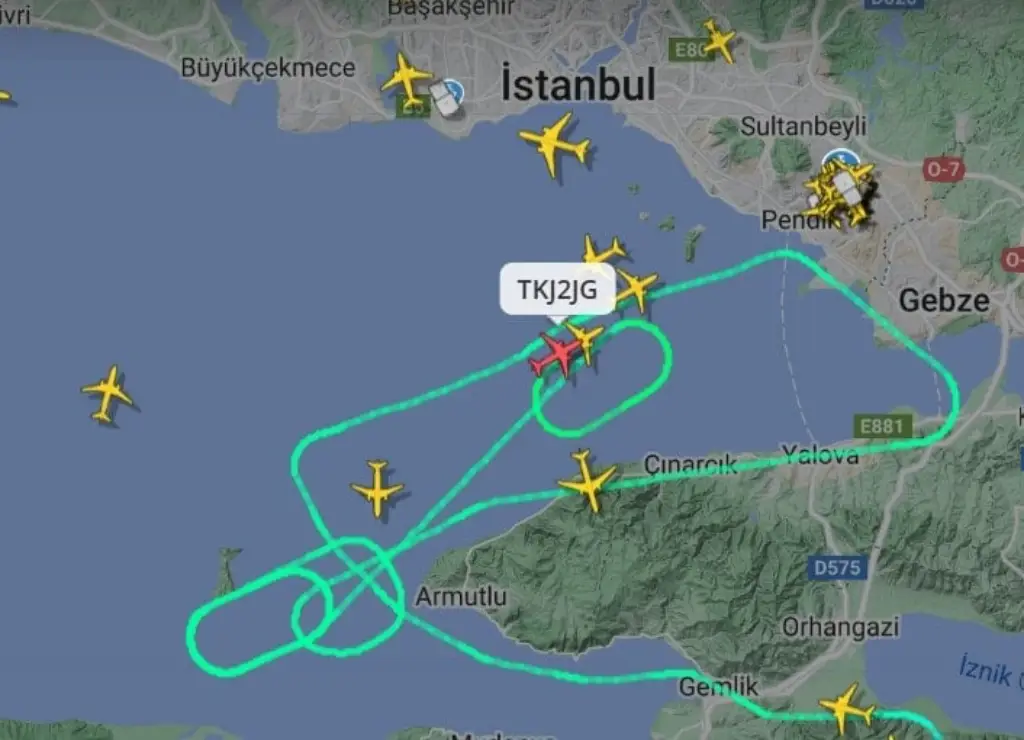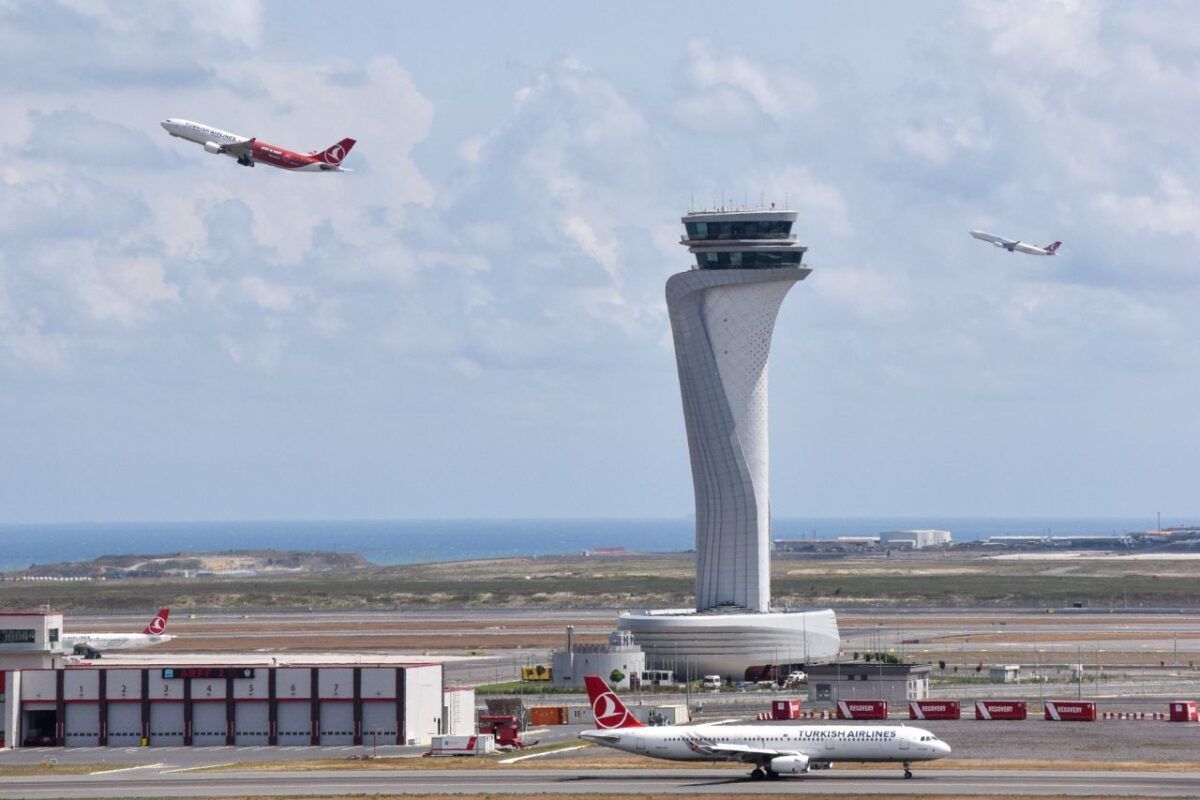Istanbul Airport weather created major disruptions overnight as strong winds swept through the city, forcing pilots to delay landings and take precautionary measures in the air.
According to meteorological warnings earlier in the day, high wind conditions were expected to affect the region. By nightfall, those predictions became reality, with intense gusts impacting both Istanbul Airport and Sabiha Gökçen Airport. Aircraft preparing to land were unable to do so on time and had to remain in holding patterns above the city while awaiting improved conditions.
The delays were not simply a matter of schedule inconvenience. In one case, a pilot attempting to land at Sabiha Gökçen Airport received a severe windshear alert—a dangerous atmospheric condition in which rapid changes in wind speed or direction can destabilize an aircraft during descent. After alerting air traffic control, the pilot was forced to abandon the landing and execute a go-around maneuver, circling back into the sky.
Elsewhere in the airspace, another pilot reported concerns about low fuel due to the extended holding pattern, informing controllers that the aircraft was approaching fuel-critical status. This type of situation typically triggers emergency planning to ensure the aircraft can land safely at the nearest available airport.
All of this occurred while air traffic control remained in constant communication with flight crews, managing one of the busiest and most complex airspaces in Europe under extreme conditions. The stormy weather affected not only aircraft operations but also created a ripple effect across the travel plans of hundreds of passengers flying into Istanbul.
Istanbul Airport, which has become a key global aviation hub in recent years, is no stranger to weather-related disruptions. However, the combination of windshear alerts and potential fuel emergencies adds a dramatic layer of complexity to what is already a high-stakes environment. Sabiha Gökçen, the city’s second major airport, also faced similar turbulence throughout the night.
What is Windshear and Why It’s So Dangerous
Windshear is one of the most hazardous weather phenomena for landing aircraft. It refers to sudden changes in wind speed and direction over a short distance, often occurring near airports during storms or when temperature differences between air layers become unstable. When an aircraft encounters windshear during descent, its lift and speed can be affected dramatically, sometimes to the point where a safe landing becomes impossible.
That’s why pilots and controllers are trained to respond immediately when a windshear warning is triggered. In this case, the pilot made the correct decision to abort the landing and circle back, prioritizing safety over schedule.
Passengers on board may not always realize the complexity of such decisions, but a go-around is a common and practiced maneuver designed to ensure the aircraft remains in a safe flight path. While it may lead to a longer flight and delays on the ground, it is ultimately a precaution that can save lives.
As of early morning, flights began to stabilize as wind conditions eased. However, lingering effects of the nighttime delays may impact schedules throughout the day, especially for connecting flights. Travelers are advised to check with their airlines for real-time updates before heading to either Istanbul Airport or Sabiha Gökçen Airport.
This incident is a reminder that even in the era of modern aviation technology, nature can still play a powerful and unpredictable role. For Istanbul, a city that bridges continents and cultures, the skies were a little less friendly this time—but thanks to swift action by flight crews and air traffic control, the night ended without further escalation.
Have you ever experienced a weather-related delay while flying? Share your story in the comments below.













